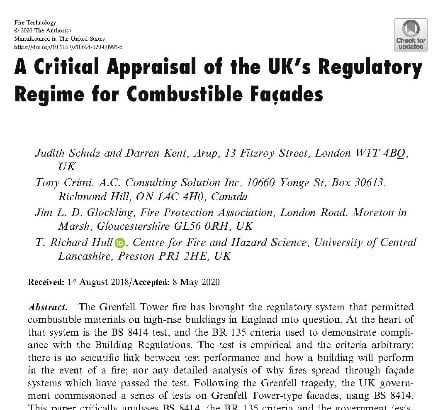
UK fire experts say rules do not account for real risks of fire penetrating the building and do not ensure safety. The analysis of the current UK regulations for combustible cladding materials, by experts from the UK Fire Protection Association, Arup and UCL (University of Central Lancashire) says that the UK’s cladding fire test BS 8414 does not take account of real risks of fire penetration through windows, uses non representative cavities behind the cladding, has an imprecise and manipulatable fire source, and allows conditions which do not ensure safety (the temperature can reach 600°C in 15 minutes and a cladding system will still pass). Following the Grenfell fire in 2017, which killed 72 people, 454 buildings > 18 m in the UK were identified as having similar highly combustible aluminium composite material (ACM) cladding, of which only 114 have to date completed renovation work. Many more buildings have other types of combustible cladding, for example high-pressure laminate (HPL wood fibre – resin boards) similar to Lakanal House (where six people died in fire in 2009 following a fire starting in a TV and spreading through the non fire-rated external cladding). The authors suggest changes to the UK cladding fire test (fuel source, test rig), investigation of coherence between test results and real building fires, revised regulatory criteria and public access to information on test results.
“A Critical Appraisal of the UK’s Regulatory Regime for Combustible Façades”, J. Schulz et al., Fire Technology, 2020 https://doi.org/10.1007/s10694-020-00993-z